Plant Cells vs. Animal Cells
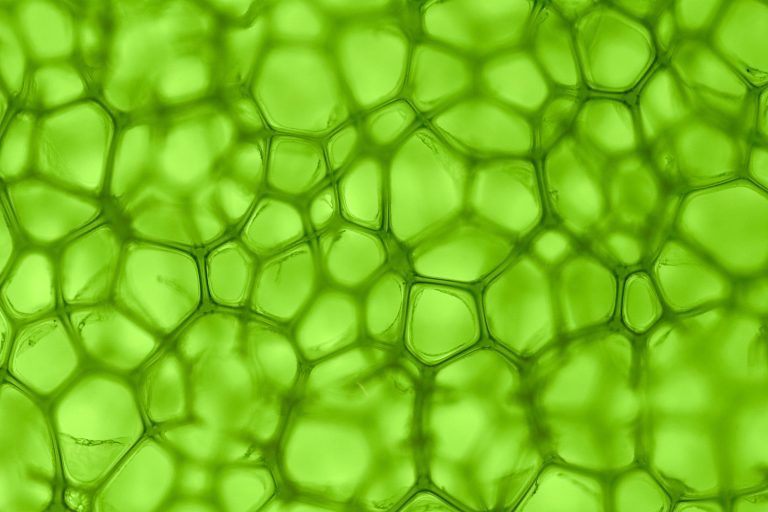
The presence of chlorophyll (green pigment) is one of the features that set a plant cell from an animal cell.
Table of Contents
Plant Cells
Most cells are not visible with the naked eye. However, with microscopes of various types, plant cells can be readily viewed and studied. In young parts of plant and fruits, cell shapes are generally round, while in older sections, the cells are somewhat boxlike with up to 14 sides as they become packed together.
A plant cell is bounded by a cell wall and the living portion of the cell is within the walls and is divided into two portions: the nucleus, or central control center; and the cytoplasm, a fluid in which membrane-bound organelles are found. Between the primary cell walls of adjacent plant cells, lies a pectic middle lamella. There can be a secondary cell wall that would be located just to the inside of the primary wall. Both walls consist mainly of cellulose, but the secondary cell wall may contain lignin and other substances. The outer boundary of the protoplasm (cytoplasm and nucleus) is a sandwich-like, flexible plasma membrane. This membrane regulates what enters and leaves the plant cell. Plant cell organelles include: endoplasmic reticulum, with and without ribosomes attached; Golgi bodies, mitochondria, and plastids. Plastids are chloroplasts, chromoplasts or leucoplasts—depending on the color and likewise the function. Chloroplasts are of specific interest to those studying plants. A plant cell also, obviously, contains a nucleus which is bounded by a nuclear envelope with pores. The pores in the nuclear envelope allow for the movement of substances in and out of the nucleus. Within the nucleus is a number of chromosomes. The number present is specific to the organism and it will be later noted how sex cells contain one-half the number of chromosomes and restore chromosome number upon fertilization. All of these organelles and the nucleus are suspended in the cytoplasm. The cytoplasm has movements that are referred to as cytoplasmic streaming or cyclosis. The particular function of the other organelles contained in plant cells can be reviewed below:
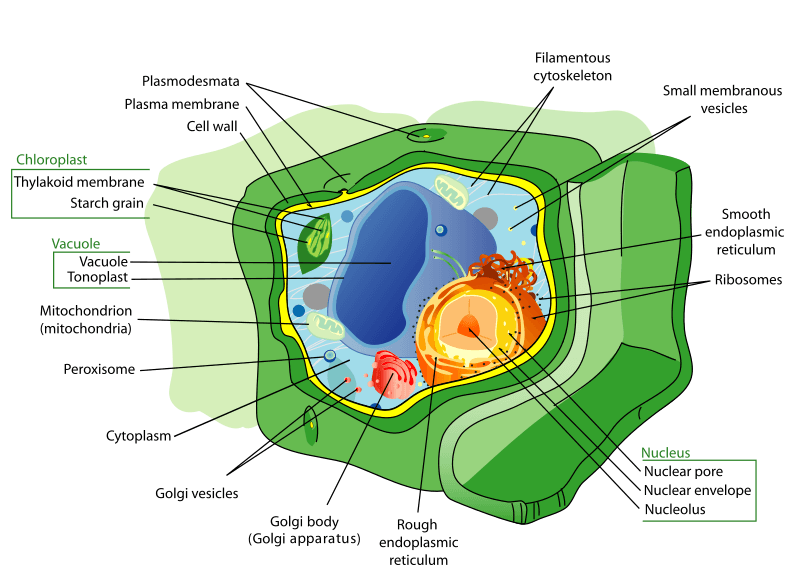
- The nucleus is in the center of most cells. Some cells contain multiple nuclei, such as skeletal muscle, while some do not have any, such as red blood cells. The nucleus is the largest membrane-bound organelle. Specifically, it is responsible for storing and transmitting genetic information. The nucleus is surrounded by a selective nuclear envelope. The nuclear envelope is composed of two membranes joined at regular intervals to form circular openings called nuclear pores. The pores allow RNA molecules and proteins modulating DNA expression to move through the pores and into the cytosol. The selection process is controlled by an energy-dependent process that alters the diameter of the pores in response to signals. Inside the nucleus, DNA and proteins associate to form a network of threads called chromatin. The chromatin becomes vital at the time of cell division as it becomes tightly condensed thus forming the rodlike chromosomes with the enmeshed DNA. Inside the nucleus is a filamentous region called the nucleolus. This serves as a site where the RNA and protein components of ribosomes are assembled. The nucleolus is not membrane-bound, but rather just a region.
- Ribosomes are the sites where protein molecules are synthesized from amino acids. They are composed of proteins and RNA. Some ribosomes are found bound to the granular endoplasmic reticulum, while others are free in the cytoplasm. The proteins synthesized on ribosomes bound to granular endoplasmic reticulum are transferred from the lumen (open space inside endoplasmic reticulum) to the Golgi apparatus for secretion outside the cell or distribution to other organelles. The proteins that are synthesized of free ribosomes are released into the cytosol.
- The endoplasmic reticulum (ER) is collectively a network of membranes enclosing a singular continuous space. As mentioned earlier, the granular endoplasmic reticulum is associated with ribosomes (giving the exterior surface a rough, or granular appearance). Sometimes granular endoplasmic reticulum is referred to as rough ER. The granular ER is involved in packaging proteins for the Golgi apparatus. The agranular, or smooth, ER lacks ribosomes and is the site of lipid synthesis. In addition, the agranular ER stores and releases calcium ions (Ca2+).
- The Golgi apparatus is a membranous sac that serves to modify and sort proteins into secretory/transport vesicles. The vesicles are then delivered to other cell organelles and the plasma membrane. Most cells have at least one Golgi apparatus, although some may have multiple. The apparatus is usually located near the nucleus.
- Endosomes are membrane-bound tubular and vesicular structures located between the plasma membrane and the Golgi apparatus. They serve to sort and direct vesicular traffic by pinching off vesicles or fusing with them.
- Mitochondria are some of the most important structures in the cell. They are the site of various chemical processes involved in the synthesis of energy packets called ATP (adenosine triphosphate). Each mitochondrion is surrounded by two membranes. The outer membrane is smooth, while the inner one is folded into tubule structures called cristae. Mitochondria are unique in that they contain small amounts of DNA containing the genes for the synthesis of some mitochondrial proteins. The DNA is inherited solely from the mother. Cells with greater activity have more mitochondria, while those that are less active have less need for energy-producing mitochondria.
- Lysosomes are bound by a single membrane and contain highly acidic fluid. The fluid acts as digesting enzymes for breaking down bacteria and cell debris. They play an important role in the cells of the immune system.
- Peroxisomes are also bound by a single membrane. They consume oxygen and work to drive reactions that remove hydrogen from various molecules in the form of hydrogen peroxide. They are important in maintaining the chemical balances within the cell.
- The cytoskeleton is a filamentous network of proteins that are associated with the processes that maintain and change cell shape and produce cell movements in animal and bacteria cells. In plants, it is responsible for maintaining structures within the plant cell, rather than whole-cell movement. The cytoskeleton also forms tracks along which cell organelles move propelled by contractile proteins attached to their various surfaces. Like a little highway infrastructure inside the cell. Three types of filaments make up the cytoskeleton.
- Microfilaments are the thinnest and most abundant of the cytoskeleton proteins. They are composed of actin, a contractile protein, and can be assembled and disassembled quickly according to the needs of the cell or organelle structure.
- Intermediate filaments are slightly larger in diameter and are found most extensively in regions of cells that are going to be subjected to stress. Once these filaments are assembled they are not capable of rapid disassembly.
- Microtubules are hollow tubes composed of a protein called tubulin. They are the thickest and most rigid of the filaments. Microtubules are present in the axons and long dendrite projections of nerve cells. They are capable of rapid assembly and disassembly according to need. Microtubules are structured around a cell region called the centrosome, which surrounds two centrioles composed of 9 sets of fused microtubules. These are important in cell division when the centrosome generates the microtubular spindle fibers necessary for chromosome separation.
- Chloroplasts
It is necessary to note a bit about the form of chloroplasts, as you will encounter them throughout this tutorial. Inside a chloroplast is a matrix called the stroma. Enzymes are found in the stroma as well as grana—stacks of coin-shaped discs, called thylakoids. It is within the thylakoids that photosynthesis takes place. Note that chloroplasts, like mitochondria, contain their own DNA. They do rely on proteins from the nucleus and are considered semi-autonomous organelles. Photosynthesis will be discussed in greater detail in the Plant Metabolism tutorial. - Vacuoles
Plant cells are also notorious for having huge vacuoles. Up to 90% of the volume of a mature cell may be taken up by a single large vacuole or several vacuoles. The vacuole is bound by a special membrane, called the tonoplast, and contains cell sap—which is composed of dissolved substances and may include pigments.
The cell cycle contains the process in which cells are either dividing or in between divisions. Cells that are not actively dividing are said to be in interphase, which has three distinct periods of intense activity that precedes the division of the nucleus, or mitosis. The division of the rest of the cell occurs as an end result of mitosis and this process occurs in regions of active cell division, called meristems. Meristems will be looked at in the plant tissue tutorial.
Mitosis is a process within the cell cycle that is divided into four phases which we will sum up here:
- Prophase—the chromosomes and their usual two-stranded nature becomes apparent, the nuclear envelope breaks down.
- Metaphase—the chromosomes become aligned at the equator of the cell. A spindle composed of spindle fibers is developed and some attach to the chromosomes at their centromere.
- Anaphase—the sister chromatids of each chromosome, that is now called the daughter chromosomes, separate lengthwise and each group of daughter chromosomes migrates to the opposite ends of the cell.
- Telophase—the groups of daughter chromosomes are grouped within a developing nuclear envelope which makes them separate nuclei. A wall forms between the two sets of daughter chromosomes thus creating two daughter cells.
In plants, as the cell wall is developing, droplets or vesicles of pectin merge forming a cell plate that eventually will become the middle lamella of the new cell wall.
Plant Cells Compared with Animal Cells
The main differences between plant cell and animal cell are as follows:
- Cell wall: Animal cells do not have a cell wall. Instead of a cell wall, the plasma membrane (usually called cell membrane when discussing animal cells) is the outer boundary of animal cells. Animal tissues, therefore, require either external or internal support from some kind of skeleton. Frameworks of rigid cellulose fibrils thicken and strengthen the cell walls of higher plants. Plasmodesmata that connect the protoplasts of higher plant cells do not have a counterpart in the animal cell model.
- Cholesterol: Plant cells do not have cholesterol whereas animal cells do have them on their cell membrane.
- Cell division: During the telophase of mitosis, a cell plate is formed as the plant cell begins its division. In animal cells, the cell pinches in the center to form two cells; no cell plate is laid down.
- Centrioles: Centrioles are generally not found in higher plant cells, while they are found in animal cells.
- Plastids: Animal cells do not have plastids, which are common in plant cells (chloroplasts).
- Vacuole type and function: Both cell types have vacuoles, however, in animal cells, vacuoles are very tiny or absent, while in plant cells vacuoles are generally quite large.
Fun activities:
- Animal Cell Coloring – have fun while familiarizing yourself with the different parts of the animal cell.
- Animal and Plance Cell labeling – label the animal and plant cell parts.
- Plant Cell Coloring worksheet – have fun while familiarizing yourself with the different parts of the plant cell.
Recommended Source:
- The Society for Experimental Biology (SEB): Plant Biology. Read the latest news on Plant Biology from SEB here.
You will also like...

Human Reproduction
Humans are capable of only one mode of reproduction, i.e. sexual reproduction. Haploid sex cells (gametes) are produced ..

Ecology & Biodiversity: New Zealand Flora & Fauna
New Zealand is known for its unique biodiversity, caused by its remarkable geography and geologic history. Breaking away..
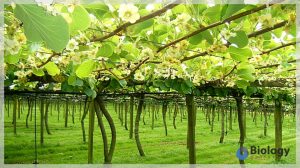
Biosecurity and Biocontrol
This lesson explores the impact of biosecurity threats, and why they need to be identified and managed. Examples to incl..
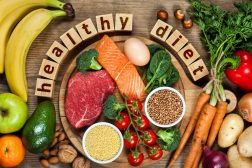
A Balanced Diet – Minerals and Proteins
Proteins and minerals can be derived from various dietary sources. They are essential for the proper growth and developm..
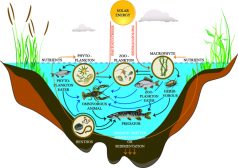
Freshwater Producers and Consumers
Freshwater ecosystem is comprised of four major constituents, namely elements and compounds, plants, consumers, and deco..
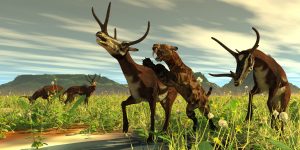
Early Mammals on Earth
The Earth's ecosphere was rapidly changing and throwing up a wide range of ecological niches that new adaptive organisms..
